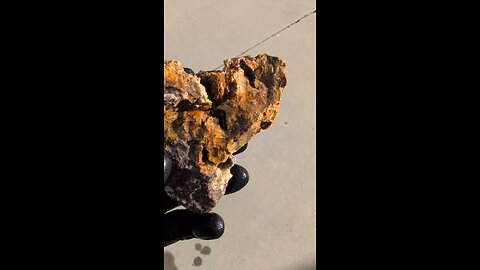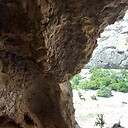
Limonite!
1 video
Updated 7 months ago
Limonite is a generic term used to describe a group of iron oxides and hydroxides that commonly occur as earthy, yellowish-brown to dark brown or black minerals. It is not a specific mineral but rather an aggregate of various iron-bearing minerals, primarily goethite (α-FeO(OH)), lepidocrocite (γ-FeO(OH)), and sometimes ferrihydrite or other iron oxyhydroxides.
Here are some key points about limonite:
Formation: Limonite forms from the weathering or alteration of iron-rich minerals, such as pyrite, magnetite, or siderite. It can also precipitate from iron-rich solutions.
Uses: Historically, limonite has been used as an ore of iron, although its iron content can vary and often requires beneficiation. It has also been used for pigments due to its range of colors.
Physical Properties:
Color: Yellow, brown, or black, often with an earthy appearance.
Hardness: Generally soft, with a Mohs hardness of about 4 to 5.5.
Luster: Typically dull or earthy.
Streak: Yellowish-brown.
Specific Gravity: Around 2.7 to 4.3, varying with the composition.
Occurrence: Limonite is found worldwide in sedimentary, metamorphic, and igneous rock environments, often in bog iron ores, lateritic soils, and as a secondary mineral in iron mines.
Identification: It can be challenging to identify limonite in the field due to its variable composition, but its color, earthy texture, and association with other iron minerals are key indicators.
Limonite's variable nature makes it an interesting study in mineralogy because it shows how minerals can form in complex, natural environments, often as a result of secondary processes like oxidation and hydration.
-
Iron rich formation!
 HumbleConservativeBased on the appearance of the rock in the image, it looks like it could be a type of iron-rich rock, possibly a form of iron ore like goethite or limonite. These rocks often have a rusty brown color due to the presence of iron oxides. The cavities and the texture suggest it might have undergone some weathering or dissolution processes, which is common in such rocks.60 views
HumbleConservativeBased on the appearance of the rock in the image, it looks like it could be a type of iron-rich rock, possibly a form of iron ore like goethite or limonite. These rocks often have a rusty brown color due to the presence of iron oxides. The cavities and the texture suggest it might have undergone some weathering or dissolution processes, which is common in such rocks.60 views